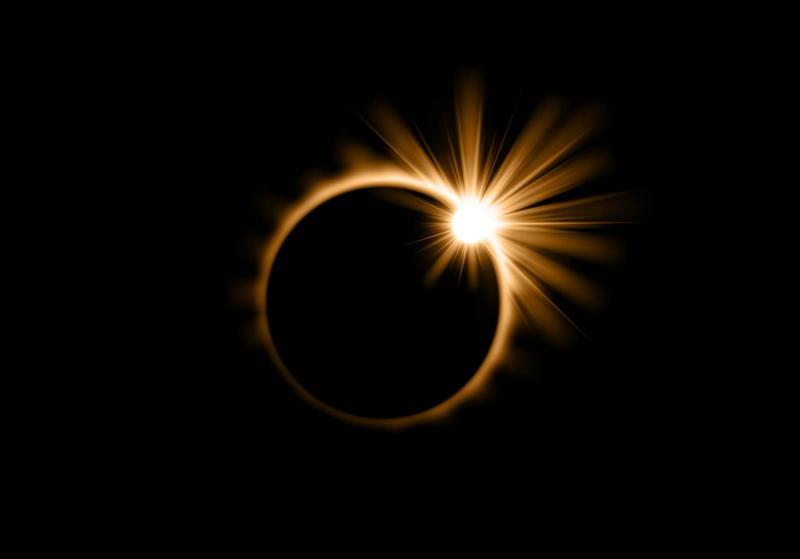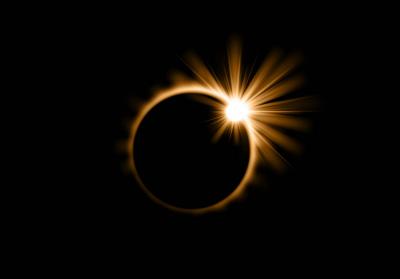Millions of people gathered on Monday to witness a rare total solar eclipse across North America, from Mexico to Canada, passing through the United States, in a stunning astronomical event that plunged vast areas into darkness during the day. From city to city, gasps of amazement echoed among the crowds who congregated in different American locations, as shown in live video coverage from NASA broadcasting from multiple sites along the eclipse's path.
The celestial event began at 18:07 GMT on the Pacific coast of Mexico. Mexican President Andrés Manuel López Obrador visited the coastal city of Mazatlán, where he spoke about it being "an unforgettable day." The event then traversed its first U.S. state among the fifteen states in the path—from Texas to Maine—before heading into eastern Canada, where its path concludes. The total time during which the moon's shadow crosses the three countries in North America during this phenomenon is approximately one and a half hours.
In the United States alone, over 30 million people live in the area that experienced the eclipse for a few minutes at most, according to NASA.
### Economic Opportunity
The event also represents an economic opportunity for many regions that experienced a significant influx of tourists and scientists interested in astronomical phenomena. NASA astronomer Jean Rigby wrote that "total eclipses are among the most emotional events one can experience," adding: "Be present. Forget your devices. Don't try to capture the scene. Just be there. Enjoy. Cry. Laugh."
U.S. authorities have been issuing safety instructions concerning the phenomenon for weeks, including the necessity of wearing special glasses to look at the sun, to avoid severe eye damage. Despite the cloud cover at some locations, visitors managed to see the eclipse for brief moments. Meanwhile, the weather was ideal in Montreal, where tens of thousands gathered in a park. Lumi Siri LaRose, 26, commented: "It was better than I thought."
### Partial and Total Eclipses
A total eclipse occurs when the moon is positioned directly between the Earth and the sun, temporarily blocking sunlight during the day. The sun is about 400 times larger than the moon and also about 400 times farther from the Earth, making the two celestial bodies appear to be the same size. Additionally, residents in areas outside the total eclipse zone, which is 185 kilometers wide on the ground, could see a partial eclipse. This was the case, for instance, in Mexico City and New York, where crowds gathered to enjoy the view.
Numerous gatherings and festivals took place across the United States on Monday. Throughout the total eclipse path, many hotels had been fully booked for months. During the last total eclipse in the United States in 2017, fewer cities were in the direct path. This time, Dallas, Indianapolis, and Cleveland were especially in the path of totality.
Jeaneth Peterson, an organizer of events in the northern area of San Antonio, Texas, confirmed: "We have people coming from all fifty states, even from Alaska and Hawaii. There are also tourists from the Netherlands, Finland, Germany, Israel, and New Zealand." Among the iconic locations where the eclipse was visible was Niagara Falls.
### Significance of the Event
The event also bears scientific significance. The schedule of activities related to the event included NASA launching three test rockets from Virginia in the eastern United States before, during, and after the eclipse, to measure changes caused by darkness in the upper atmosphere of the Earth and the ionosphere, where a large part of communication signals pass through.
Additionally, the solar corona, the outer layer of the sun's atmosphere, becomes especially visible during an eclipse and must be closely monitored: this is where solar flares occur, but our star is currently approaching its peak activity (unlike in 2017). The eclipse can also cause unusual behavior in animals, which are sensitive to changes in light and temperature.
The next total solar eclipse visible in the United States (except for Alaska) will occur in 2044. Before that, a total eclipse will take place in Spain in 2026.




